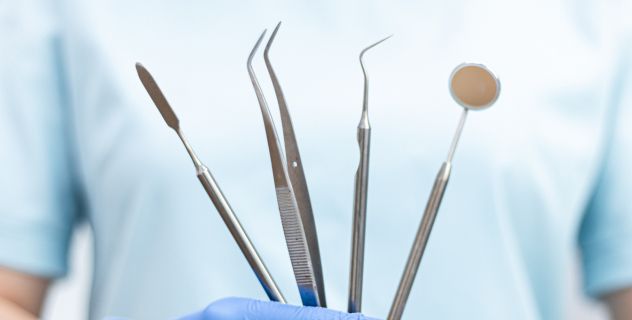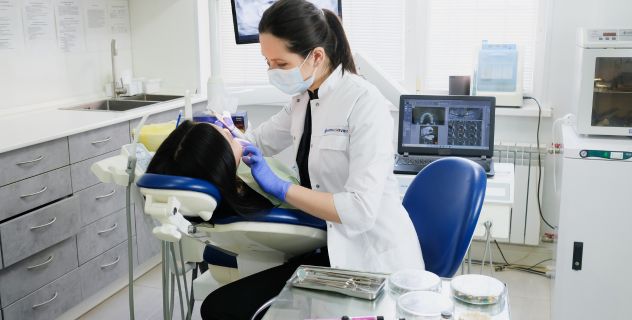Dental Proxilaxis



Dental prophylaxis is a preventative treatment performed by a dentist to maintain good oral health. It involves a deep cleaning of teeth and gums, removing plaque, tartar, and bacteria that can cause cavities and periodontal disease. It also contributes to aesthetic improvement by reducing surface stains. It is recommended to perform it every six months to avoid serious dental problems, ensure proper hygiene, and prevent future oral health complications.
Prevention of oral diseases:
 The prevention of oral diseases is essential for maintaining good overall health, and dental prophylaxis is one of the most effective tools to achieve this. This procedure, performed by the dentist, focuses on the removal of bacterial plaque and accumulated tartar, two of the main causes of diseases like cavities and gingivitis. Plaque is a sticky film that constantly forms on the teeth due to food remnants and bacteria. If it is not regularly removed through brushing and flossing, it can harden and turn into tartar, making its removal even more difficult. The accumulation of tartar irritates the gums, which can lead to gingivitis, an early form of periodontal disease.
Dental prophylaxis not only removes plaque and tartar but also deeply cleans the surfaces of the teeth, preventing bacteria from developing and causing infections. This treatment also helps detect gum problems, such as bleeding or inflammation, which could indicate a more serious condition like periodontitis, a more advanced infection that can result in tooth loss if not properly treated.
In addition to the removal of plaque and tartar, dental prophylaxis also has an aesthetic effect, as it can remove surface stains, improving the appearance of the teeth. This procedure also promotes better oral hygiene by allowing the patient to receive personalized instructions on how to care for their teeth effectively at home. By maintaining a proper dental cleaning routine, such as regular brushing, flossing, and periodic visits to the dentist for prophylaxis, the risk of severe oral diseases is minimized, and a healthier, longer-lasting smile is promoted.
In conclusion, dental prophylaxis is an essential preventive measure for maintaining oral health. It not only prevents common diseases like cavities and gingivitis but also improves dental aesthetics and promotes good oral hygiene habits, reducing the risk of long-term complications.
The prevention of oral diseases is essential for maintaining good overall health, and dental prophylaxis is one of the most effective tools to achieve this. This procedure, performed by the dentist, focuses on the removal of bacterial plaque and accumulated tartar, two of the main causes of diseases like cavities and gingivitis. Plaque is a sticky film that constantly forms on the teeth due to food remnants and bacteria. If it is not regularly removed through brushing and flossing, it can harden and turn into tartar, making its removal even more difficult. The accumulation of tartar irritates the gums, which can lead to gingivitis, an early form of periodontal disease.
Dental prophylaxis not only removes plaque and tartar but also deeply cleans the surfaces of the teeth, preventing bacteria from developing and causing infections. This treatment also helps detect gum problems, such as bleeding or inflammation, which could indicate a more serious condition like periodontitis, a more advanced infection that can result in tooth loss if not properly treated.
In addition to the removal of plaque and tartar, dental prophylaxis also has an aesthetic effect, as it can remove surface stains, improving the appearance of the teeth. This procedure also promotes better oral hygiene by allowing the patient to receive personalized instructions on how to care for their teeth effectively at home. By maintaining a proper dental cleaning routine, such as regular brushing, flossing, and periodic visits to the dentist for prophylaxis, the risk of severe oral diseases is minimized, and a healthier, longer-lasting smile is promoted.
In conclusion, dental prophylaxis is an essential preventive measure for maintaining oral health. It not only prevents common diseases like cavities and gingivitis but also improves dental aesthetics and promotes good oral hygiene habits, reducing the risk of long-term complications.
Maintaining general oral health:

Maintaining overall oral health is essential to prevent various oral diseases and ensure the well-being of the mouth over time. Dental prophylaxis is a key procedure in this process, as it helps maintain a healthy and clean mouth, contributing to the prevention of diseases such as dental cavities, gingivitis, and other periodontal conditions.
During a prophylaxis session, the dentist removes bacterial plaque and accumulated tartar from the teeth and gums. Plaque, a sticky layer made up of bacteria and food remnants, constantly forms on the teeth. If not properly removed, it can harden and turn into tartar, which not only affects the aesthetic appearance of the teeth but can also cause inflammation and damage to the gums. The accumulation of tartar is closely related to the onset of diseases like gingivitis, which, if untreated, can progress to periodontitis, a more severe infection that can lead to tooth loss.
Dental prophylaxis not only helps keep the teeth free of tartar and plaque but also improves gum health. The treatment prevents gum inflammation and bleeding, common problems in people who do not follow proper oral hygiene. Additionally, prophylaxis allows for the early detection of signs of infections or diseases that might go unnoticed during daily brushing.
Regular maintenance of oral health through dental prophylaxis also promotes good hygiene habits. After the treatment, patients usually receive personalized recommendations to maintain an effective dental care routine, which includes proper brushing, flossing, and periodic visits to the dentist. This helps prevent long-term problems and contributes to a healthier, more lasting smile.
Improving dental aesthetics:

Improving dental aesthetics is one of the most notable benefits of dental prophylaxis. This treatment, which involves a deep cleaning performed by a dentist, is not only preventive but also aesthetic. Over time, teeth accumulate plaque and tartar, which are not only harmful to oral health but can also affect the overall appearance of the smile. Dental prophylaxis removes these accumulations, resulting in whiter, brighter, and healthier teeth.
Tartar, which forms when plaque is not adequately removed, can cause yellowish or brown stains on the teeth. These stains are difficult to remove with regular brushing, affecting the aesthetic of the smile. Prophylaxis removes this tartar and surface stains, leaving the teeth cleaner and more visually appealing. Additionally, removing plaque also improves breath, as bacterial plaque is one of the main causes of bad breath.
In addition to improving the appearance of the teeth, dental prophylaxis also helps maintain healthy gums. Gums affected by gingivitis can cause inflammation and redness, negatively impacting the overall aesthetics of the mouth. Prophylaxis treatment removes plaque beneath the gums and helps restore gum health, promoting firm, pink gums that contribute to a more harmonious smile.
By removing bacteria and impurities from the oral cavity, dental prophylaxis helps maintain a clean and healthy mouth, enhancing both the aesthetics and functionality of the mouth. In summary, prophylaxis is not only crucial for disease prevention but also for maintaining optimal dental aesthetics, ensuring a bright and healthy smile in the long term.
Benefits of Dental Proxilaxis:
Dental prophylaxis offers several benefits, such as preventing cavities and periodontal disease, improving breath, removing stains, and early detection of oral problems. It also helps maintain a healthy, fresh smile.

- Prevention of caries and periodontal disease.
- Plaque and tartar removal.
- Improved overall oral health.
- Early detection of dental problems.
- Education on dental hygiene habits.
What is dental prophylaxis?
It is a professional cleaning performed by the dentist to prevent oral diseases.
How often should it be done?
Generally, every six months, although it may vary depending on individual needs.
Is dental prophylaxis painful?
It is not usually painful, although it can cause discomfort in some cases.
Does prophylaxis prevent cavities?
Yes, by removing plaque and tartar, you reduce the risk of cavities.
Can I do it if I have bleeding gums?
Yes, prophylaxis helps treat gum problems, but it is important to inform your dentist..
We always take care of your smile.
614 415 8236 Call us and schedule your appointment

